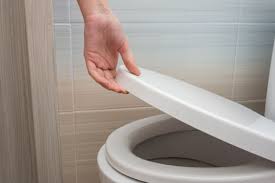Why you should close your toilet lid when you flush
For years the debate has raged on whether the toilet seat should be left up or down. Now we have good reason to put the contentious issue aside by suggesting that both the toilet seat and lid be lowered before you flush.
When you flush the toilet, it causes turbulence in the toilet bowl. This turbulence turns into a bacterial plume or aerosol spray, causing droplets to become airborne. Studies have shown that the toilet plume could stay airborne for as long as three minutes and rise up to 5 metres into the air. The flush can produce potentially infectious aerosols that will live in your bathroom for hours.
Every time you flush, any toothbrushes, towels, shower curtains, or surfaces in the vicinity are being blanketed in bacteria and other pathogens. You too are probably receiving a blow of gaseous bacteria to the face.
This increases your chances of inhaling or touching these nasty and downright yucky plumes.
Research reported by the USA CDC suggests that toilet plume could play a contributory role in the transmission of pathogens such as bacteria and infectious diseases. Microbes can come from whatever is in that toilet bowl, including infectious diseases.
Vomit and faeces can contain high pathogen concentrations such as Shigella, Salmonella, and even norovirus. These pathogens can actually survive on surfaces for weeks or even months.
Don’t forget about your mobile phone. Do you take your phone to the toilet with you? After flushing, your phone is probably loaded with aerosols from the toilet. You wash your hands then touch your phone.
What do we conclude? While not necessarily eliminating 100% of the toilet plume, the simple act of putting down the toilet seat before flushing, will go a long way to reducing the impact of bacterial spread in the toilet and bathroom – particularly in public toilet areas.

